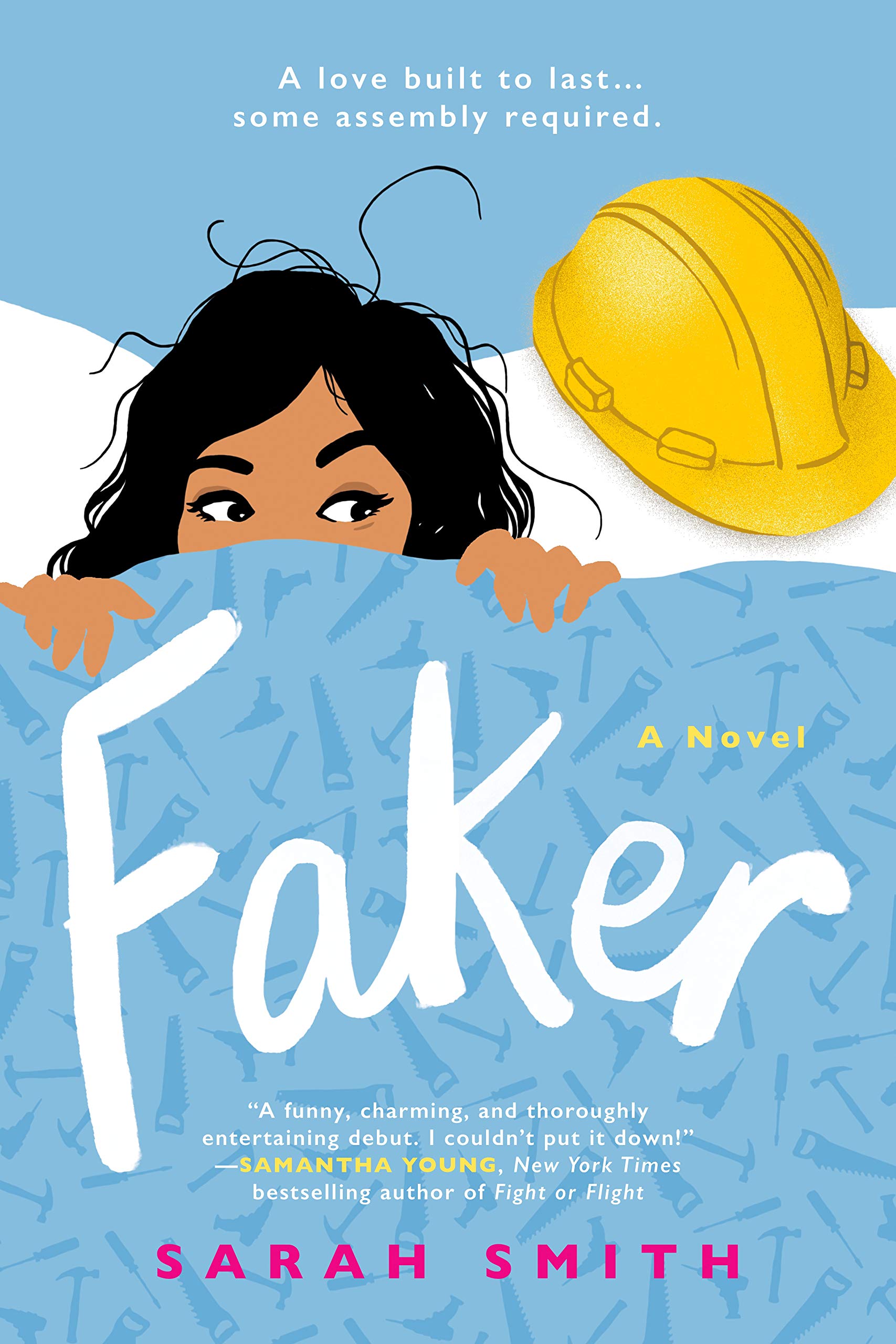By Samantha Pak
Northwest Asian Weekly
 The Faker
The Faker
By Sarah Smith
Berkley, 2019
Emmie Echavarre is a faker. She has to be as one of the few female employees at Nuts & Bolts, the power company where she works. During business hours, she works to be tough — the opposite of her easy-going self — in order to survive in her male-dominated workplace.
But the one thing Emmie, who is half Filipino, doesn’t have to fake is how much she dislikes her coworker, Tate Rasmussen. Tate has been hostile to her since they first met, despite Emmie’s repeated attempts to be friendly.
If only he weren’t so good looking.
Then the two of them are forced to work together on a charity construction project for their company. The more time they spend together, the more Emmie begins to see another side to Tate. She learns that Tate has a soft heart and is kinder than she thought — and that there has been a reason why he has been so antagonistic with her.
“Faker” is the story about two people who struggle with being themselves and they come to realize that one of the few places they can be, is with each other.
Both Emmie and Tate are complex and complicated characters. Although the story is told through Emmie’s point of view, readers learn a lot about Tate just through their interactions. Smith shows readers why the two are the way they are.
Emmie is a strong woman trying to make her mark in an industry where she is a minority, both in terms of gender as well as race. We see how difficult it can be, but Emmie doesn’t let the obstacles get in her way.
Another thing I appreciated was Tate’s introversion. So many times in male/female romances, the male lead is portrayed as more of a ladies man and outgoing. Smith shows that just because Tate is different from what’s expected, doesn’t mean he’s not someone worth loving — something we all should remember.
 The Best at It
The Best at It
By Maulik Pancholy
Balzer + Bray, 2019
Rahul Kapoor is about to start seventh grade in his small Indiana town. With middle school just around the corner, Rahul is growing increasingly anxious.
Sensing his anxiety, Rahul’s grandfather, Bhai, gives him some advice: Find one thing you’re really good at and excel at it.
This leads Rahul, who is Indian American, and his best friend, Chelsea, on a quest to figure out what he’s really good at. What follows are hilarious and heartbreaking attempts at football and acting, things Rahul has never tried before. He thinks that once he finds it, school bully Brent Mason will finally leave him alone. And he’ll stop worrying about staring at his classmate Justin Emery for too long.
“Best” is the story about a boy trying to figure out who he is and finding the courage to actually be that person. Rahul is smart and initially cares a lot about what other people think (as most middle schoolers tend to). But as the story unfolds, he slowly learns about the power that comes with just being himself.
Pancholy’s portrayal of Rahul’s desperate need to be the best at something, specifically the stress it causes him, will have readers (especially younger readers) questioning whether the effort is really worth it. Rahul struggles with stress and pressure (mostly self-inflicted), bouts of obsessive compulsive disorder, and his sexuality. One of the things I really enjoyed about “Best” was the relationships. We see how close Rahul is with his grandfather, how supportive Rahul’s parents are of him and his brother, and how loyal of a friend Chelsea is. Pancholy shows readers the importance of these relationships and what (and who) should really matter to us.
 Interior Chinatown
Interior Chinatown
By Charles Yu
Pantheon, 2020
When it comes to thinking about himself and his place in the world, Willis Wu does not see himself in a starring role — not even in his own life story.
Instead, he just sees himself as Generic Asian Man. Sometimes he gets to play other roles, such as Disgraced Son, but he’s always a secondary character, never the protagonist. And every day when he leaves his small room in a Chinatown SRO (single room occupancy hotel) and enters Golden Palace, the restaurant where his parents work, “Black and White,” a procedural cop show, is constantly in production. Even there, Willis is just a bit player. But his dream is to be Kung Fu Guy, the pinnacle role for an Asian man. Everyone in the community believes this. Except Willis’ mother, who tells him, “be more.”
“Interior” is a fun satirical novel about Hollywood tropes and Asian stereotypes. The story is filled with stereotypical Asian roles we have seen on TV and in films, from Generic Asian Man and Sifu, to Dragon Lady (of varying ages) and Oriental Flower. And even though the roles are not meant for us to differentiate the characters from each other or to humanize them when compared to Black and white characters, Yu does a great job of showing readers the individuals behind these bit roles.
I’ll admit that “Interior” was initially confusing for me to read, as it goes from being written as a narrative to more like a TV or movie script. But that is how Yu differentiates from Willis living his own life, and when he is playing a role.
“Interior” is also told from a second person point of view. This was another creative technique, especially when Willis or “you,” the reader, begins to think about how there could be more to life than playing bit roles in someone else’s story.
Samantha can be reached at info@nwasianweekly.com.




So wonderful to read such lovely things about Faker! Thank you so much for the writeup. The Best At It and Interior Chinatown sound like such incredible reads, I’m immediately adding them to my TBR.